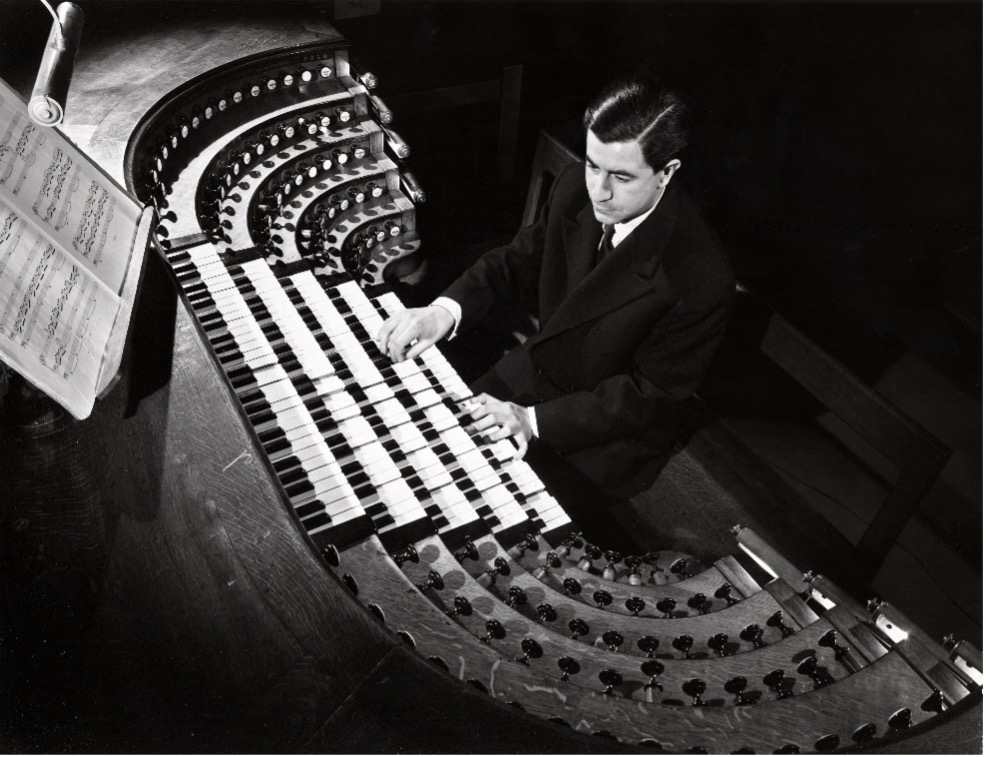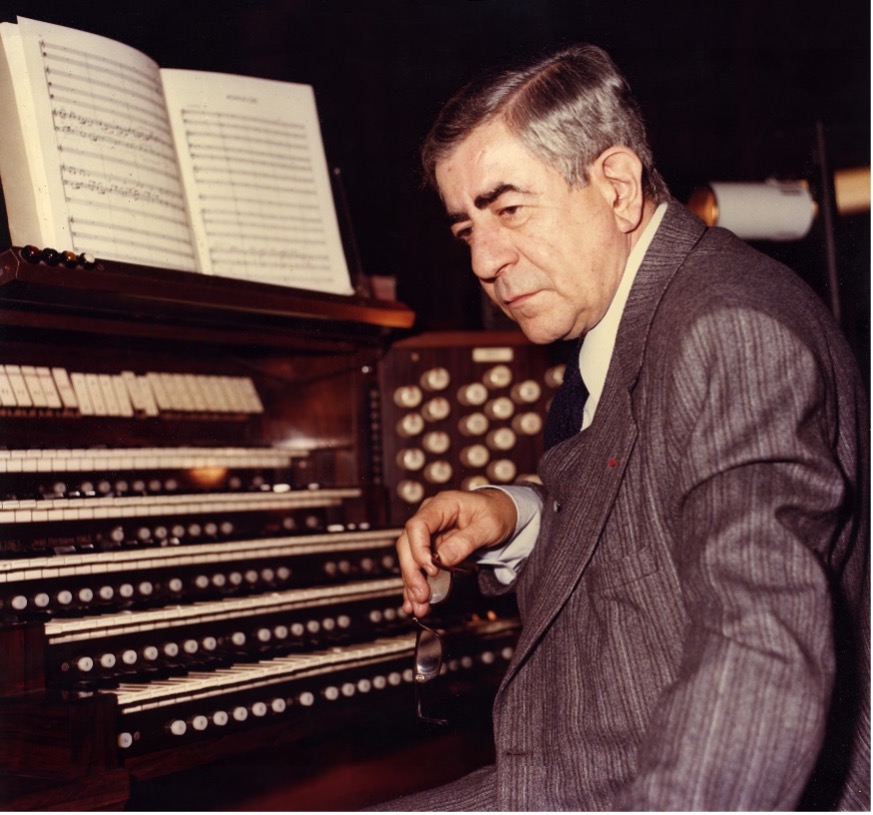Memories of an improviser who shaped generations of organists
Elisabeth Hubmann
This year, many places are commemorating Pierre Cochereau, the long-time organist of Notre-Dame Cathedral in Paris and world-famous organ improviser, who would have turned 100 on 9 July. In Paris, Jean-Paul Imbert, Françoise Levechin and Neithard Bethke will therefore be giving a memorial concert on this day at 5pm, the live stream of which can be followed online worldwide. Until then, the IOOF will be publishing videos of organists from all over the world every day, pointing to the many facets of Cochereau’s music.

During his 30-year tenure at Notre-Dame de Paris, Pierre Cochereau, one of the most renowned organ improvisers alongside Jean Guillou, not only performed at the funerals of notable statesmen such as General Charles De Gaulle and President Georges Pompidou, and the spontaneous memorial service for President John F. Kennedy—where the silence of the 10,000 attendees was described by Cochereau as more profound than any music—but also distinguished himself as a highly respected pedagogue.
For the student of Maurice Duruflé and Marcel Dupré, among others, improvisation was seen as an art on the way to a dying tradition. Not enough organists were improvising at the time. All the more reason for him to encourage organists to try their hand at it. Many of his students tell of how Cochereau invited them to spontaneously sit down at the console of Notre-Dame during mass and improvise during the offertory or the excerpt – which often ended in outbreaks of sweat. Letters and other correspondence attest to Pierre Cochereau’s pleasure in inviting organists to Notre-Dame or to his “small” five-manual house organ with 63 stops („un petit orgue personnel“). As this example shows, his modesty and humour were legendary.
The Cochereau legacy
Numerous sound and video recordings still give us an impression of his person and his musical style, an elaborate mixture of the tonal language of his teachers, especially Duruflé, but also the French-modern tradition of improvising and composing, using chromaticism and extended harmonies by composers such as Louis Vierne or Claude Debussy. Cochereau was proud to have the most modern console in France in his hands and was particularly pleased with the rebuild, which began in 1963 and increased the organ from 90 to 109 stops, including chamades in 16′, 8′ and 4′ lengths. He was also an advocate of utilising modern technical possibilities to the extent that he systematically had all Sunday concerts in Notre-Dame recorded, with which he left us a valuable database of organistic styles. He can also be regarded as a pioneer in other ways: He gave concerts with a touring organ that he transported himself, making him one of the first organists to popularise the organ outside of churches. His masterly art of registration using a wide range of tone colours, his technical brilliance and variety of rhythms are what set him apart as an improviser. Form was always particularly important to him, which he emphasised by defining improvisation as constructed but spontaneous music intended to give the illusion of a composition. Thus, his forms were always moulded in unexpected, new directions. In online interviews, many of which are available on YouTube, it can be seen that he deliberately designed his improvisations to take full advantage of the reverberation times and spatial effect of the Paris cathedral. He also often emphasised the importance of good piano playing technique for organists.

Transmission of the Cochereau-Style
In addition to his role as director of the conservatoire in Nice from 1961 and from 1979 of the Conservatoire National Supérieure de Musique in Lyon, where he campaigned for the installation of an organ in the Maurice Ravel Auditorium, Pierre Cochereau had a large number of students. This was particularly international, as he taught at numerous summer academies, including for years at the academy in Haarlem (NL), which still exists today. While he left behind relatively few compositions, Jeanne Joulain and David Briggs in particular transcribed some of his improvisations afterwards. Some organists can still improvise in the “Cochereau style” today, including Olivier Latry and François-Henri Houbart, who naturally developed their own approach to improvisation. We must not forget Pierre Pincemaille, who was never Cochereau’s pupil, but was strongly inspired by his style and was one of the few organists to pass it on to a wide range of pupils who still use and develop it today. As it was a real taboo at the time and not in keeping with the code of conduct to visit several teachers at the same time for training purposes, many organists did not have the chance to study with Cochereau without being ostracised by their teachers. Pierre Pincemaille was therefore self-taught in the Cochereau style and later passed it on to his pupils. Cochereau’s personality and style were so distinctive that it is fair to say that he left no French organ improviser uninfluenced in one way or another, even if this is not always realised. So let us remember this organ improvisation heritage at a time when so many traditions are being lost.
With kind thanks to Michel Tissier, Quentin Guérillot and Neithard Bethke for sharing their knowledge and memories.
IOOF 2022
Sitemap
Each month we’re giving away one film FOR FREE! 🎬
Get your free film now by signing up for our newsletter! 🎉